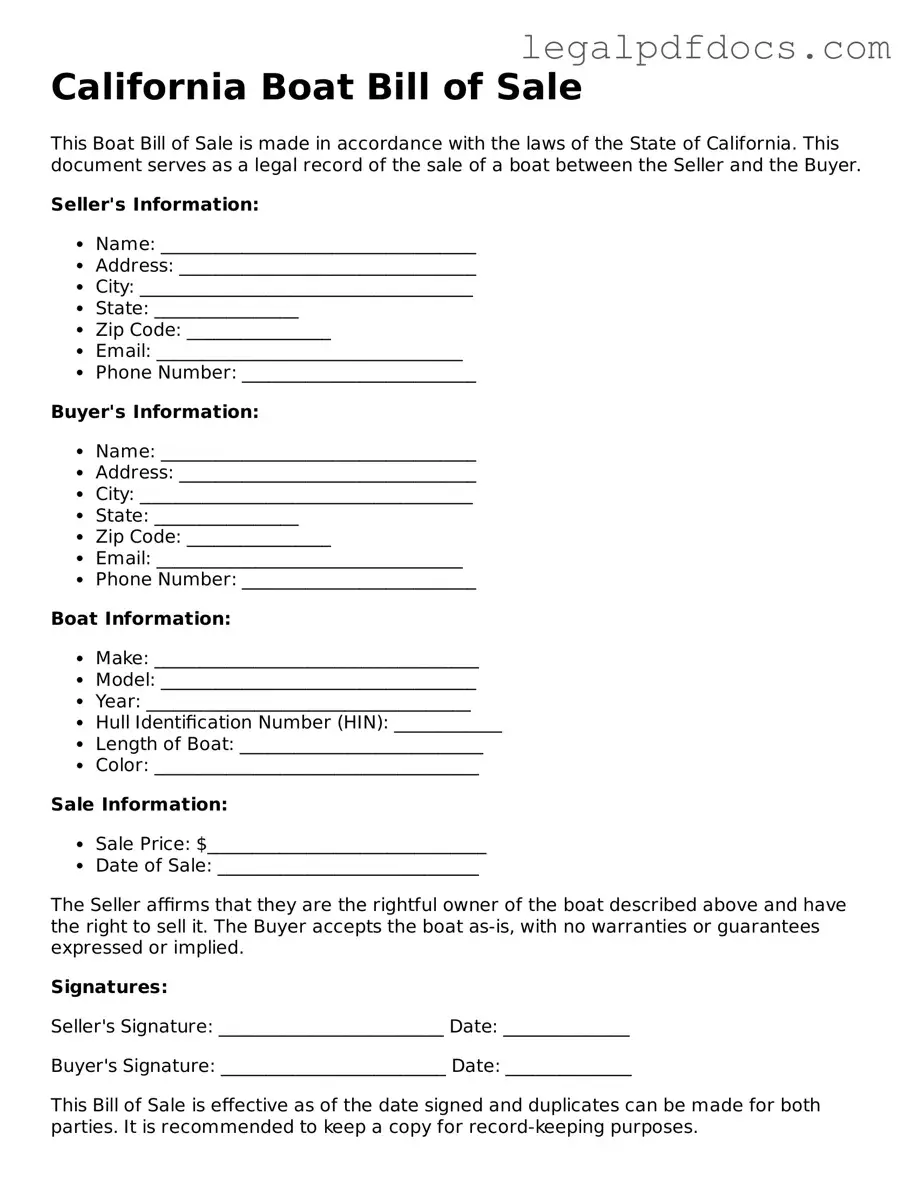Official Boat Bill of Sale Form for California
The California Boat Bill of Sale form is a crucial document that serves as proof of ownership transfer for a boat in California. This form outlines essential details such as the buyer and seller's information, the boat's specifications, and the sale price. Understanding how to properly fill out this form is vital for a smooth transaction and legal compliance.
Ready to complete your Boat Bill of Sale? Fill out the form by clicking the button below.
Open Boat Bill of Sale Editor Here
